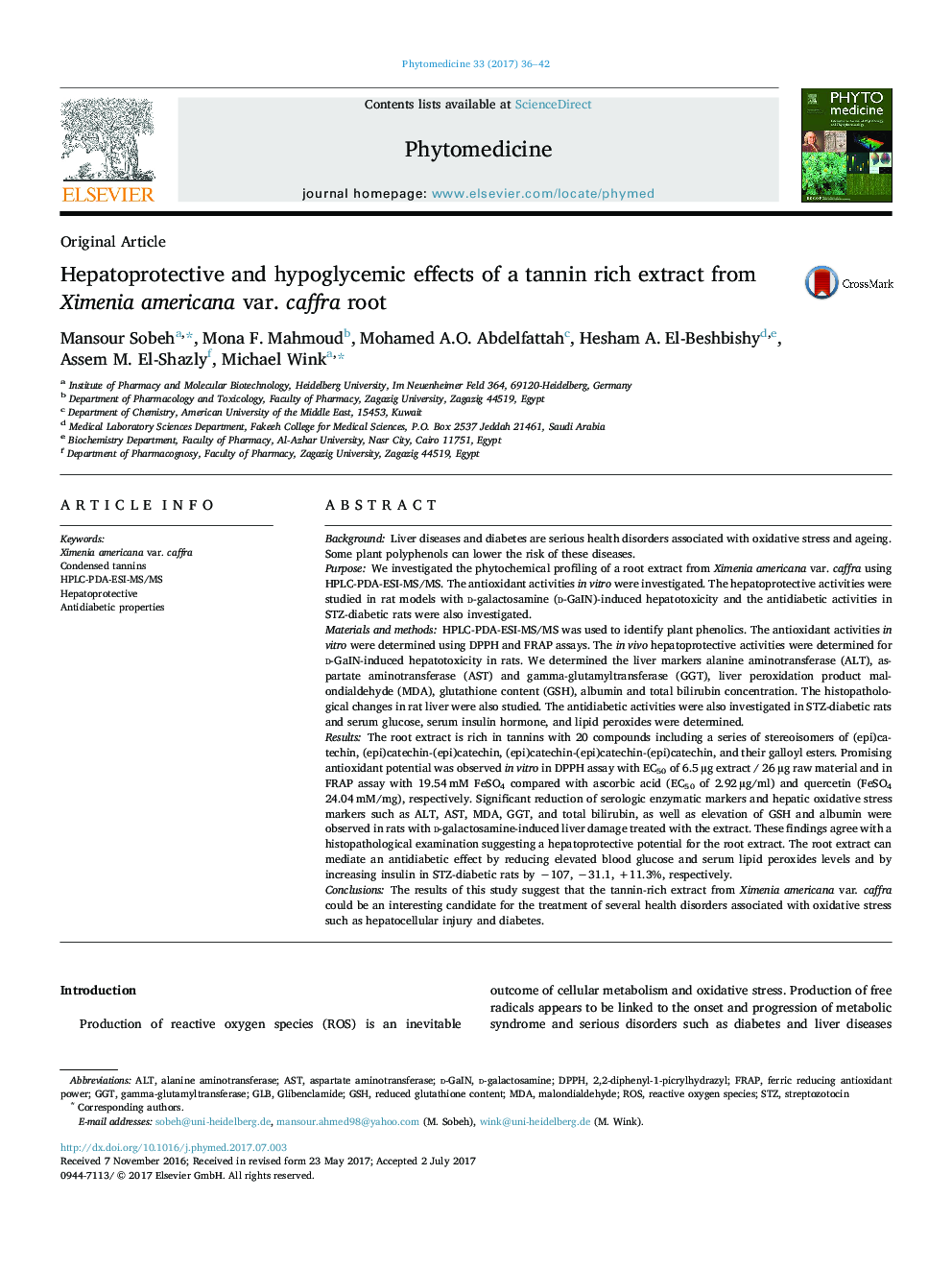| Article ID | Journal | Published Year | Pages | File Type |
|---|---|---|---|---|
| 5549277 | Phytomedicine | 2017 | 7 Pages |
BackgroundLiver diseases and diabetes are serious health disorders associated with oxidative stress and ageing. Some plant polyphenols can lower the risk of these diseases.PurposeWe investigated the phytochemical profiling of a root extract from Ximenia americana var. caffra using HPLC-PDA-ESI-MS/MS. The antioxidant activities in vitro were investigated. The hepatoprotective activities were studied in rat models with d-galactosamine (d-GaIN)-induced hepatotoxicity and the antidiabetic activities in STZ-diabetic rats were also investigated.Materials and methodsHPLC-PDA-ESI-MS/MS was used to identify plant phenolics. The antioxidant activities in vitro were determined using DPPH and FRAP assays. The in vivo hepatoprotective activities were determined for d-GaIN-induced hepatotoxicity in rats. We determined the liver markers alanine aminotransferase (ALT), aspartate aminotransferase (AST) and gamma-glutamyltransferase (GGT), liver peroxidation product malondialdehyde (MDA), glutathione content (GSH), albumin and total bilirubin concentration. The histopathological changes in rat liver were also studied. The antidiabetic activities were also investigated in STZ-diabetic rats and serum glucose, serum insulin hormone, and lipid peroxides were determined.ResultsThe root extract is rich in tannins with 20 compounds including a series of stereoisomers of (epi)catechin, (epi)catechin-(epi)catechin, (epi)catechin-(epi)catechin-(epi)catechin, and their galloyl esters. Promising antioxidant potential was observed in vitro in DPPH assay with EC50 of 6.5â¯Âµg extract / 26â¯Âµg raw material and in FRAP assay with 19.54â¯mM FeSO4 compared with ascorbic acid (EC50 of 2.92â¯Âµg/ml) and quercetin (FeSO4 24.04â¯mM/mg), respectively. Significant reduction of serologic enzymatic markers and hepatic oxidative stress markers such as ALT, AST, MDA, GGT, and total bilirubin, as well as elevation of GSH and albumin were observed in rats with d-galactosamine-induced liver damage treated with the extract. These findings agree with a histopathological examination suggesting a hepatoprotective potential for the root extract. The root extract can mediate an antidiabetic effect by reducing elevated blood glucose and serum lipid peroxides levels and by increasing insulin in STZ-diabetic rats by â107, â31.1, +11.3%, respectively.ConclusionsThe results of this study suggest that the tannin-rich extract from Ximenia americana var. caffra could be an interesting candidate for the treatment of several health disorders associated with oxidative stress such as hepatocellular injury and diabetes.
..Graphical abstractDownload high-res image (96KB)Download full-size image
